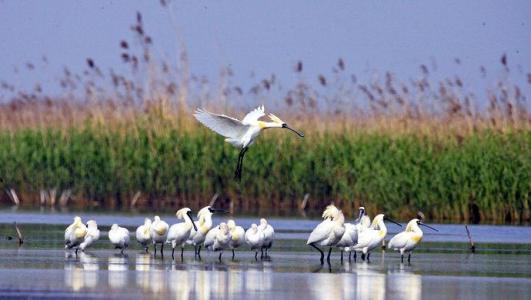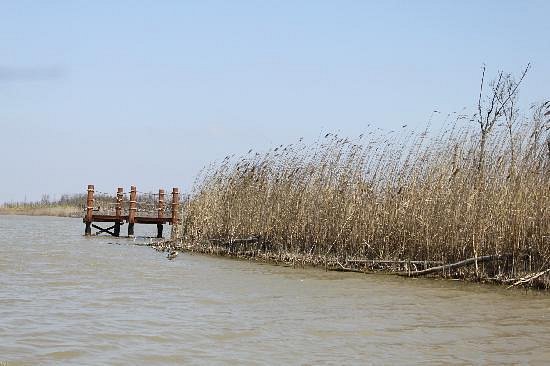
Chinese and American Alligator Research
photos Chinese Alligator Alligator sinensis Shanghai Chongming Island Dongtan Wetland Park American Alligator A. mississippiensis
Tag: Chongming Dongtan National Bird Sanctuary and Nature Reserve
I recently had the incredible opportunity to visit Chongming Dongtan National Bird Sanctuary and Nature Reserve, which I learned is the most significant nature reserve in Shanghai. As a passionate bird photographer, I was eager to explore the area and capture the stunning avian wildlife that called it home.
One of the main highlights of my visit was witnessing the wintering of around 100 Hooded Crane in the sanctuary. The sight of these majestic birds in their natural habitat was simply breathtaking and a once-in-a-lifetime experience. I couldn’t resist taking numerous shots of these birds and their mesmerizing flight patterns.
Another fascinating aspect of Chongming Dongtan Nature Reserve is its role in reintroducing the Chinese Alligator. Seeing these rare creatures up close was an incredible experience, and it was exciting to learn about the conservation efforts being made to protect and preserve them.
As a bird photographer, I highly recommend visiting Chongming Dongtan Nature Reserve for any avid birdwatcher or nature enthusiast. The sanctuary’s diverse bird species, including several rare and endangered species, make it an ideal location for capturing unforgettable photographs.
If you’re planning a visit, I suggest checking out the birding page on Chongming Island, which provides a comprehensive guide to the reserve and its inhabitants. And if you have any questions, don’t hesitate to reach out to the knowledgeable team at [email protected] for more information.
Overall, my experience at Chongming Dongtan National Bird Sanctuary and Nature Reserve was unforgettable, and I can’t wait to return to capture more of its stunning avian beauty.
Chinese Alligator on Shanghai’s Chongming Island

During our school trip to Chongming Dongtan Wetland Park on November 18th, my team and I were thrilled to discover wild Chinese Alligators Alligator sinensis on Shanghai’s Chongming Island. These three alligators were a part of a reintroduction program that has been taking place on the island since 2007, aimed at increasing their population.
Despite there being over 15,000 Chinese Alligators in China, it was disheartening to learn that only less than 300 of them exist in the wild. Therefore, the reintroduction program plays a crucial role in protecting and conserving these rare and endangered creatures.
The experience of witnessing these alligators in their natural habitat was truly remarkable and a testament to the success of the reintroduction program. I felt privileged to have the opportunity to see these majestic creatures up close, and it was an experience that I will never forget.
It was a beautiful day when my team and I, consisting of Steven Bonta and five other students from Shanghai Hongrun Boyuan School, set out on an adventure to Chongming Dongtan Wetland Park. Our goal was to witness the rare and endangered Chinese Alligator in its natural habitat.
At around 2:00 PM, we were thrilled to come across a group of these alligators basking in the gentle sunlight, a sight that was truly a feast for the eyes. As a photographer, I was particularly excited to capture this moment with my Sony Alpha 1 camera body, battery grip, and Sony FE 200-600 G lens, allowing me to take images at an incredibly high resolution of 50 megapixels.
We approached the alligators with caution and respect, not wanting to disturb them in any way. It was a surreal experience to get so close to these magnificent creatures, and yet they remained unperturbed by our presence. We were able to take several stunning photos of the alligators, capturing their beauty and grace in their natural habitat.
The entire experience was unforgettable, and it was incredible to witness the success of the reintroduction program in action. I felt honored to have had the opportunity to witness these rare and endangered creatures up close and to be able to share their beauty with others. It was an adventure that I will cherish for a lifetime.
The comments on our sighting were provided by Yiwen Huo, a specialist in Chinese Alligators.
These images were captured within the Chinese Alligator Reserve, located in the heart of Shanghai Dongtan Wetland Park. The set of images shows two adult alligators, measuring between 1.3m and 1.5m long, as well as a juvenile that was nearly 40cm in length. Our observation was made at a distance of no more than 10 meters from the alligators.
During our visit, we noticed that the alligators seemed somewhat lethargic. This behavior is typical for this time of year, as their metabolism slows down in preparation for brumation. It was fascinating to learn that the International Wildlife Conservation Society (WCS) released six Chinese Alligators into Dongtan Wetland in 2007. Through satellite tracking, it was observed that these alligators successfully reproduced and entered brumation. In the first year alone, 12 eggs were recorded, and the recent sighting of the juvenile suggests that the Chinese Alligator population may have grown tenfold in Dongtan Wetland.
However, it is important to note that the low survival rate of juveniles is a common aspect of reptile reproduction, which presents a significant challenge in the conservation of Chinese Alligators. A female alligator can lay 10 to 30 eggs at a time, yet this female was only seen protecting a single juvenile. Despite this, the successful reintroduction of Chinese Alligators in Dongtan Wetland is a testament to the efforts of conservationists, and it offers hope for the long-term survival of this incredible species.
On November 18th, in Shanghai’s Chongming Dongtan Wetland Park, we observed a juvenile Chinese Alligator on its mother’s back. This species has had a significant impact on Chinese culture, with mentions in classical essays and poems, and potentially inspiring the Chinese dragon. The Chinese language has a unique character, “鼍” (tuó), to represent the species, which is also known as the Yangtze Alligator or “yángzǐ’è” in modern Chinese. Westerners learned about Chinese Alligator through Marco Polo’s writings about his travels to China in the 1200s.
There are two true alligator species today, Chinese Alligator Alligator sinensis and American Alligator A. mississippiensis. The Chinese Alligator is much smaller than its American counterpart, about half as long and one-sixth as heavy on average. Their teeth are blunter, which is an adaptation to their mollusk and crustacean-heavy diet, and their bony plate on the eyelid is typically present. In contrast, the less heavily-armored American Alligator usually lacks this plate. Chinese Alligators also lack webbing on their feet, unlike the partly webbed feet of the American Alligator.
Back to our observation, the adults were between 1.3 to 1.5 meters long, and the juvenile was about 40 centimeters long. They appeared lethargic, which is common as their metabolism slows down at this time of year as they prepare to start brumating. In 2007, the International Wildlife Conservation Society (WCS) stocked six Chinese Alligators in the Dongtan wetland, and the population has since reproduced smoothly, with observers recording twelve eggs in the first year alone. With this sighting of a juvenile, it is possible that the Chinese Alligator population in Dongtan Wetland has grown more than tenfold. However, the low survival rate of juveniles is a typical part of the reptile reproduction cycle, making conservation efforts challenging.

Visit our Chinese Alligator Research Page to view photographs of one of the world’s oldest living vertebrates and one of the most critically endangered animals globally. Alternatively, check out our American Alligator Research Page, where you can see photos and listen to a sound recording of one of America’s most well-known wild animals.
Be notified every time we post. Send an
email with “Subscribe” as the subject to
[email protected]
Donate to Shanghai Birding!
Select your preferred currency level (in USD).
Select your preferred currency level (in USD).



